Hey! That’s not a balisong. That’s not even a folder. He can’t do that! Can he do that?
That’s right, I’m breakin’ the law. You can’t stop the Mad Flipper What Flips At Midnight! However, it’s not much of a stretch of “pocket” to apply it to this, the Boker Gnome. Here’s why, with a US quarter for scale:

Leetle kneefses! It’s just so cute.
In the exciting and occasionally baffling world of the fixed blade microknife, the Gnome stands out as one of my favorites. That’s because unlike many attempts at this kind of thing, the Gnome manages to be designed in such a way that it’s actually useful for something. It’s designed by Jesper Voxnaes, who is also behind quite a few of Boker’s other knife models. That might have something to do with it.
The Gnome is near as makes no difference to 3-7/8" long overall. That’s it. The blade is about 2-1/4" long with 1-7/8" or so of very usable edge. The blade is 1/8" at its thickest, tapering down towards the point, in a pseudo-Wharncliffe profile and a subtly hollow grind. The beefy Micarta handle is a solid 1/2" thick, though, which really aids in your ability to grasp the knife between your index finger and thumb without much risk of fumbling it. It weighs 44.3 grams by my scale, or 1.56 ounces (just the knife, not including the sheath), so it’s not exactly going to pull your trousers down if you put it in your pocket. Put it back in the sheath first, though, unless you’re wearing your chainmail underpants today.
The blade on this version is relatively pedestrian 12C27. So it’s not capable of hammering nails or sawing through a brick. But it is easy to sharpen and is very corrosion resistant.
Here it is, sheathed, compared to my usual EDC Kershaw/Emerson CQC-6K:
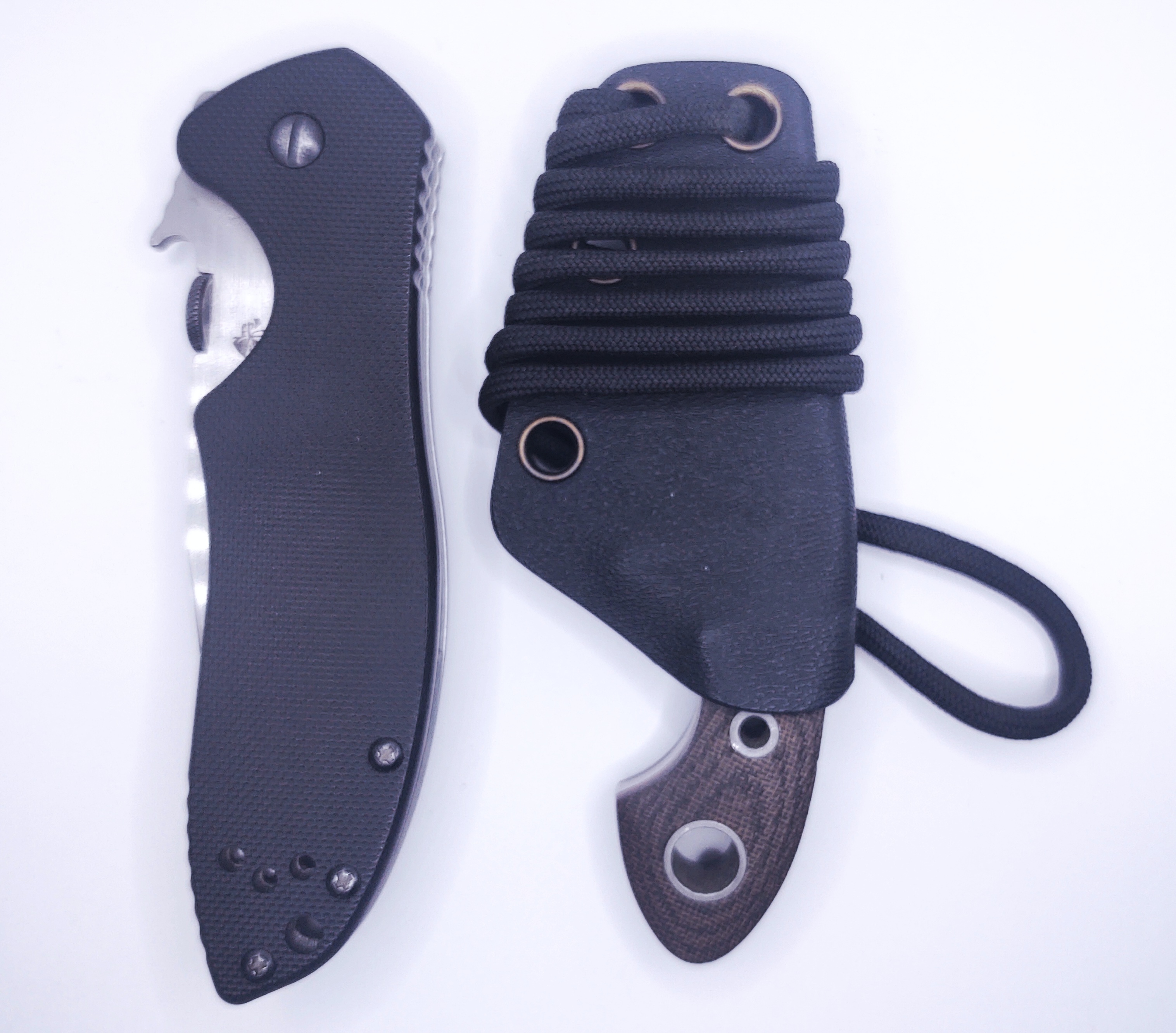
The whole ensemble is actually slightly shorter than a typical folding pocketknife. Neat.
You would think the Gnome is a usability nightmare, what with being so small. Surprisingly, it isn’t. The grip methodology is basically, “Oops, all choil!” There is a small ricasso at the very base of the blade, presumably to keep you from nicking yourself while you use it. Otherwise, your index finger goes in the huge circular cutout on the bottom of the handle (a quarter fits in it easily) and your thumb goes over the top. you can get your ring finger on there as well at the base of the handle. The blade’s edge is actually curved. None of it is straight, its profile basically describing a very small section of an arc of a very large circle. This essentially makes it all belly, so you can bring any part of the edge down on a flat surface for cutting – you’re not just limited to ineffectually scratching at things with the tip, like most mini-knives.
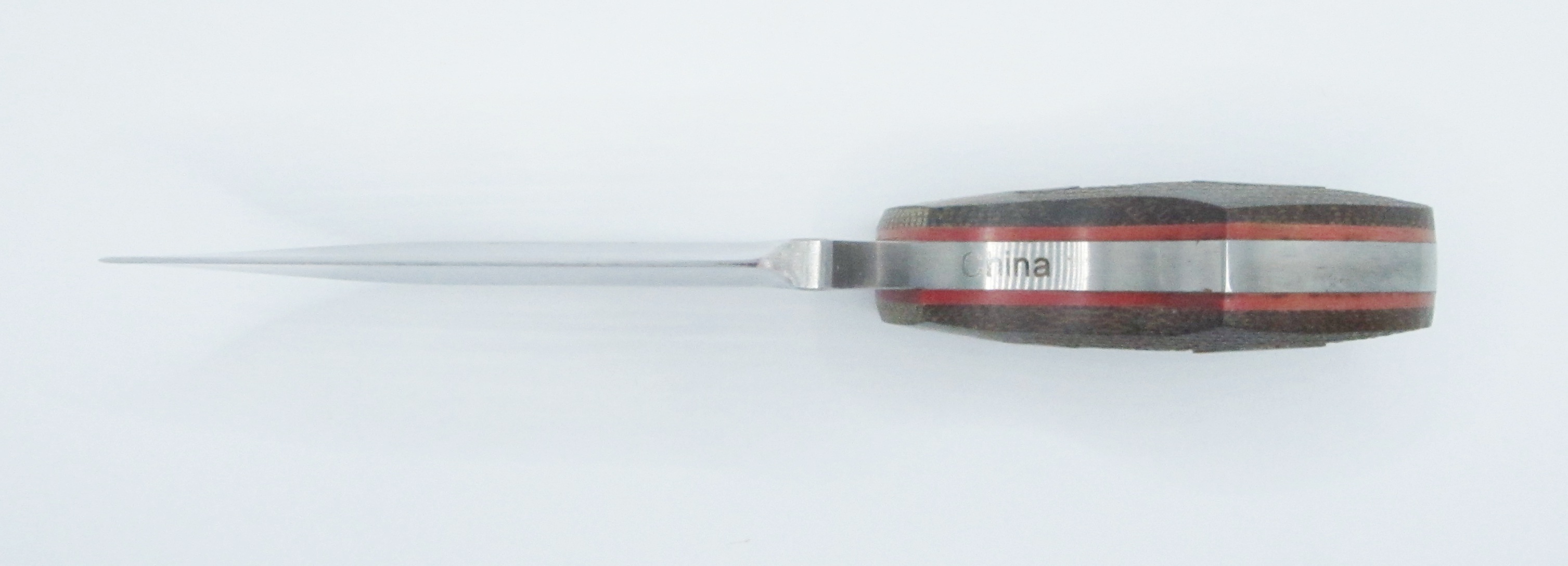
The Gnome is very competently and precisely machined, as is typical from our friends in Germany. This despite the rather prominent “China” marking in the finger notch. The next time one of your friends tells you “everything made in China is crap,” just show them this. Mine came with a pretty keen edge on it from the factory and I made it even keener still, which was easy due to the precise and even blade grind.
The Micarta handle, as you can see, is embellished with these red spacers for, er, I guess vibration reduction purposes while you use this tiny knife to baton tree trunks? Actually, at this size they’re purely aesthetic, but they do match the design language of several other Boker fixed blades I own – the Rold and PSK leap to mind.
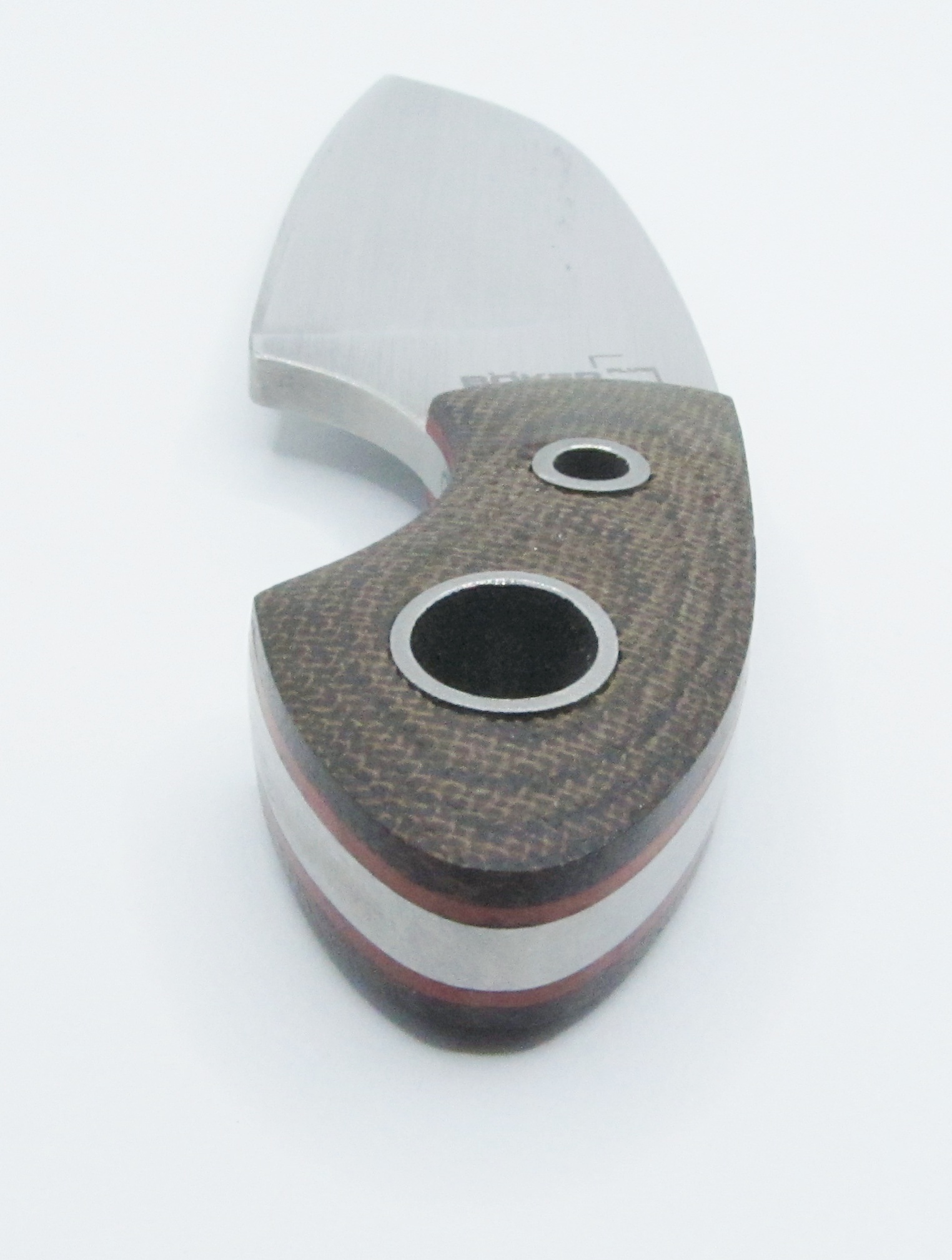
Both handle pins are hollow. The larger one would make a good candidate for putting a lanyard through, if you’re into that kind of thing.
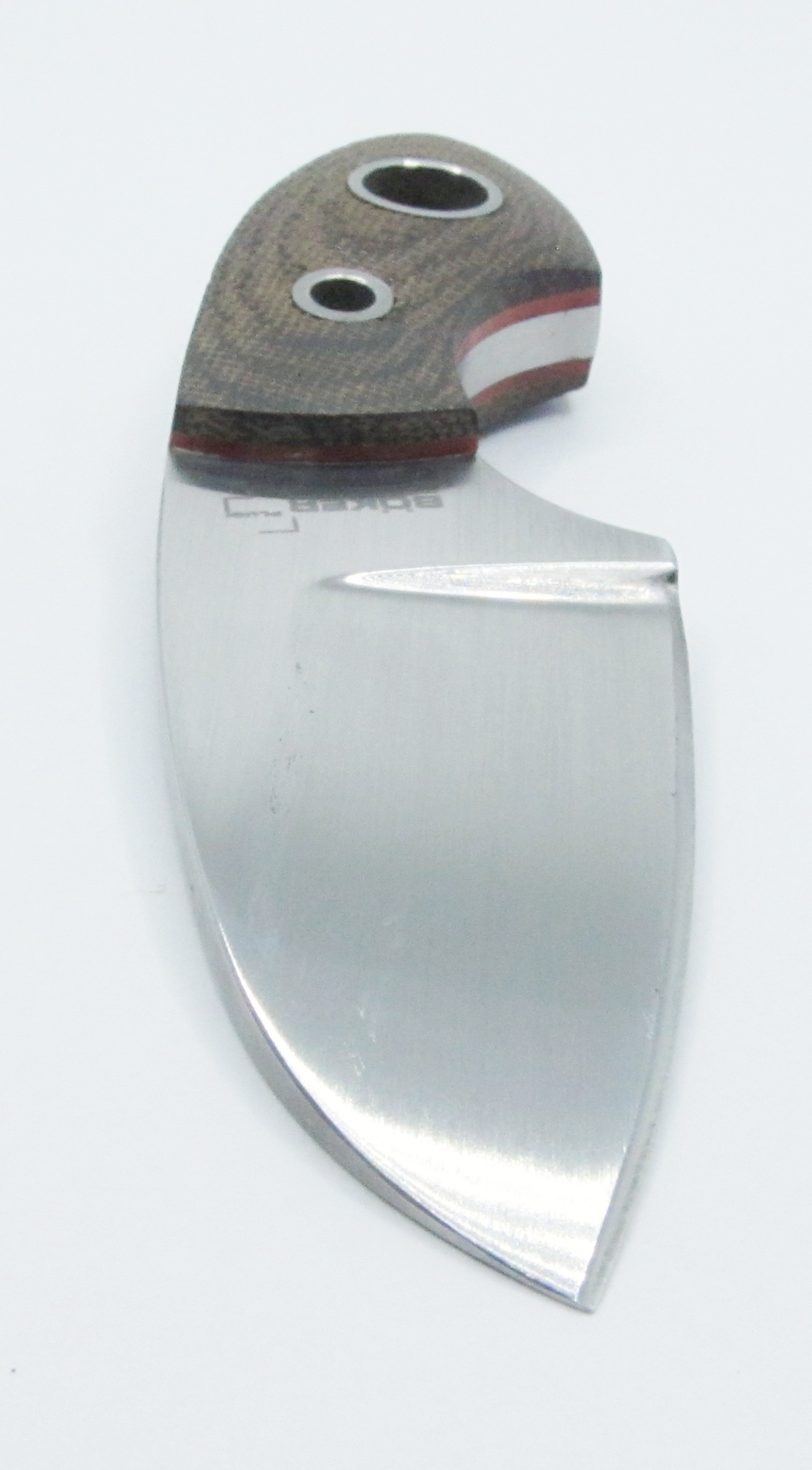
Here’s the business end. You can see the arc of the edge here really well.
The Gnome comes with the Kydex sheath you see here, but doesn’t include any other carrying provision. It’s easy enough to just toss it in your pocket, of course, but you can also use your favorite through-hole mounting thingamabob to stick it on a belt or pack strap. Me, I use a length of paracord to convert the Gnome into a neck knife, because I bought it to use as a little utility blade when I’m kayaking. I’m often wearing swim trunks doing that, which don’t have pockets.
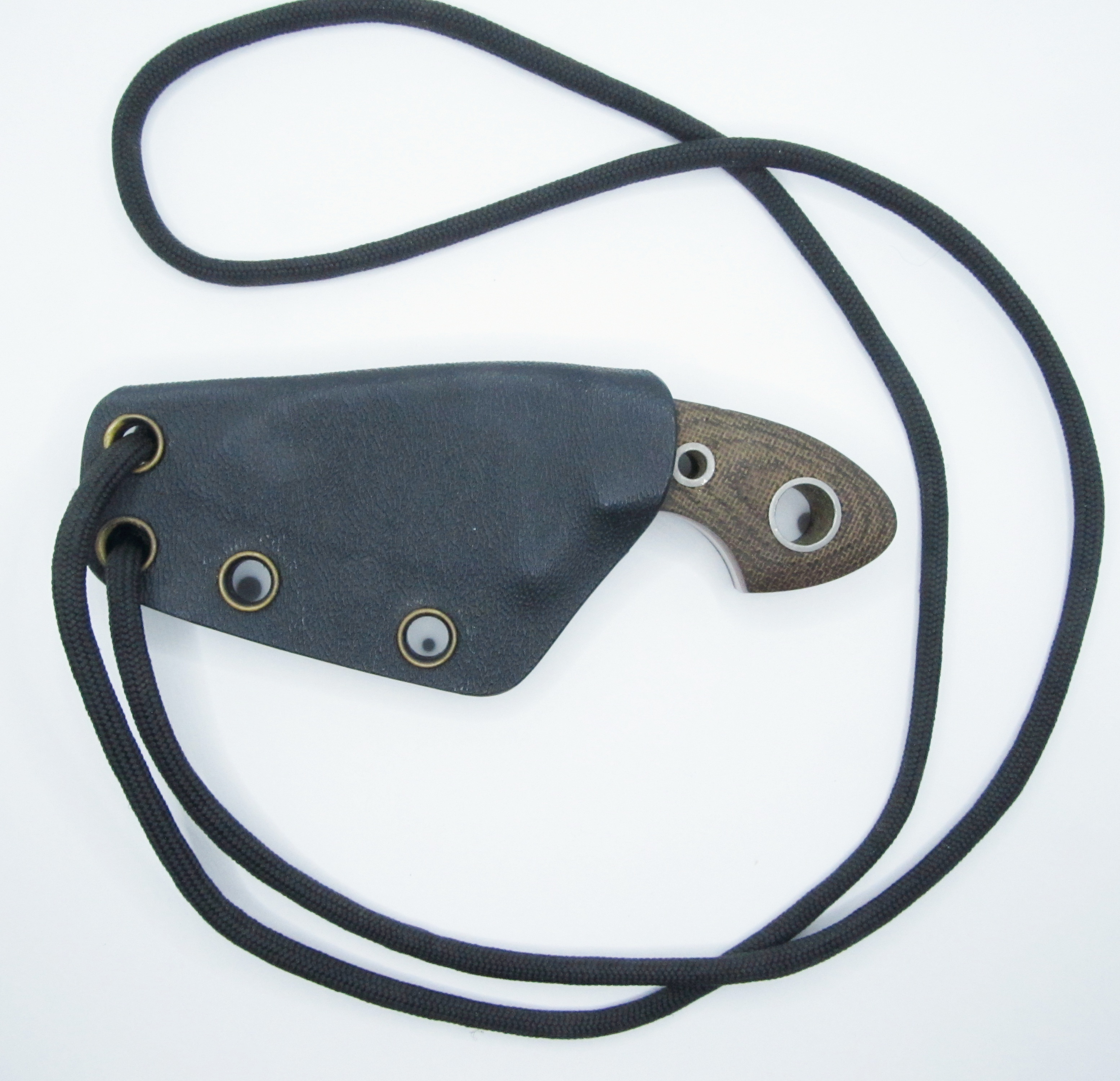
Now, it’s the disassembly section of the review!
…
…I can’t disassemble the Gnome. Not without destroying it. The handle pins (tubes?) are press fit and probably peened into place as well. It’s not coming apart. Hey, if you guys want to donate me one of the new fancy D2 ones of these maybe I’ll destroy mine for you and take pictures. But since the Gnome is a full tang knife, and the tang is exposed, we already know what we’re going to find under there anyway.
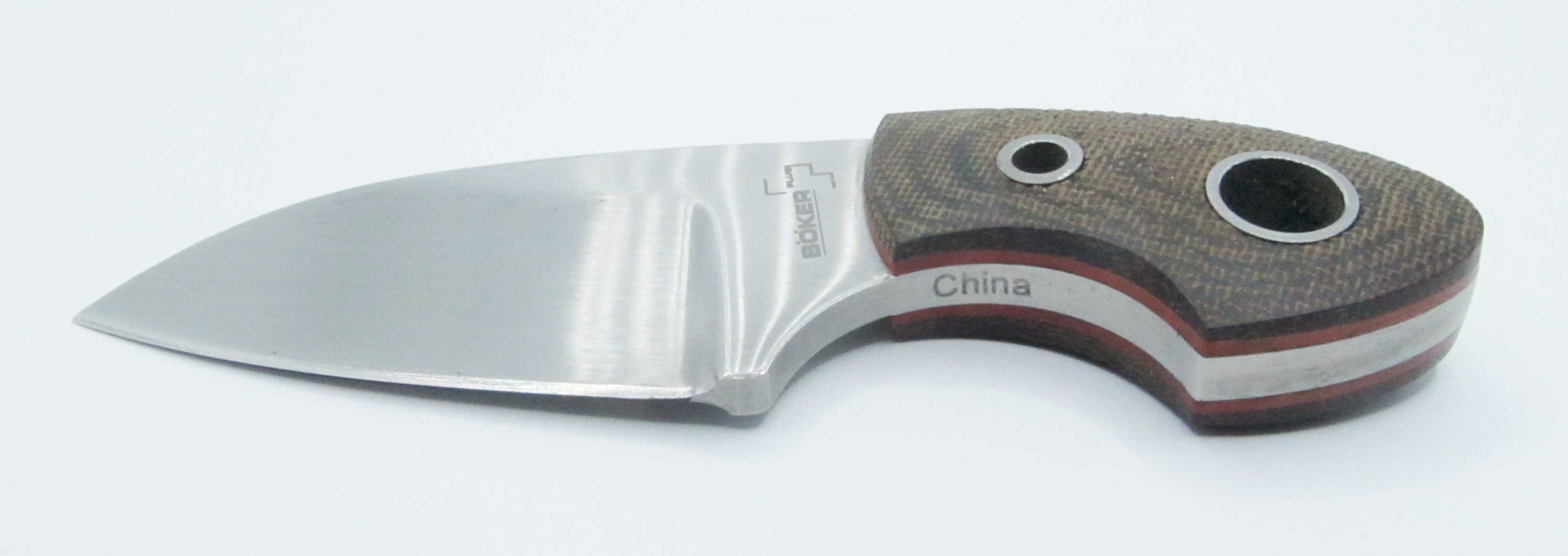
The Inevitable Conclusion
It’s not just a boat knife. The Gnome could be equally useful around the camp site for cutting cord, whittling, and food prep. Or around the office slicing envelopes with definite, but dainty, authority. If you are considering a neck knife for use as some kind of tactical operator ninja concealed self-defense holdout, don’t. But if you want something that you can use as a neck knife that’s actually useful for real world tasks, consider this.
Every knife is a pocket knife if you have big enough pockets!
Great review, as always. I am always on the lookout for a useful pocket fixed blade knife.
I suppose that if your pocket is too small, the knife will make it bigger for you?



